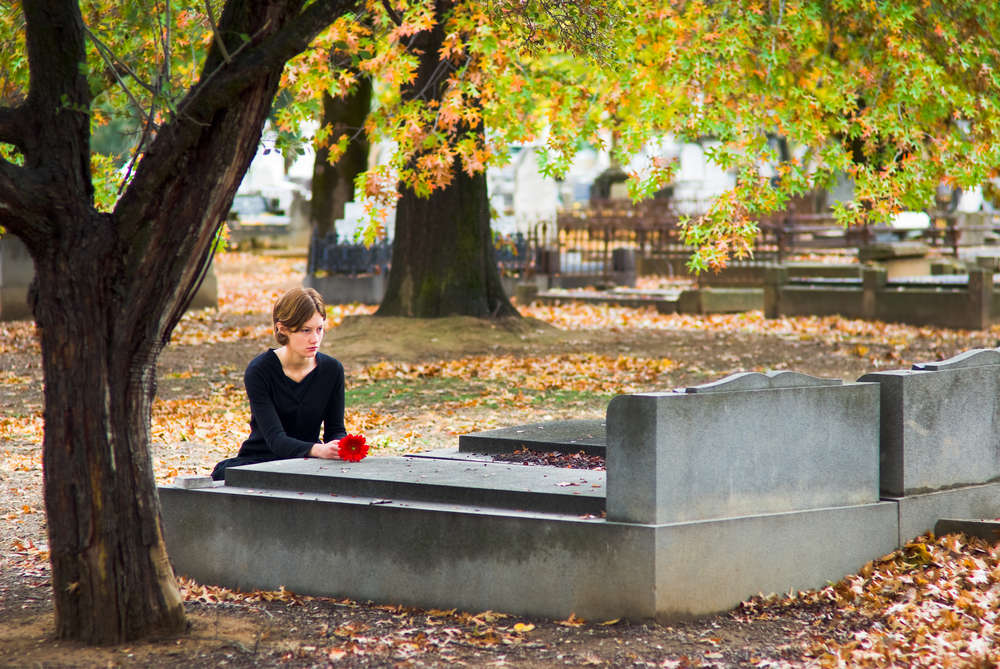Trauma barrels into your life, wrecks the world as you know it, and then leaves you wondering how to put things back together. In the wreckage of decimated opportunities, friends, careers, relationships, homes, wishes, and dreams, you stand awash in feelings of loss and sorrow. Naturally, these emotions lead to anxiety as you worry about the future and how to discover the best path for moving forward.
If you’ve experienced trauma, then you’ve also experienced grief, and probably anxiety. These often go hand in hand: for example, research suggests that approximately 40% of bereaved people will struggle with an anxiety disorder in the first year following the death of a loved one1, including a miscarriage or pregnancy loss. Sometimes, the “death” connected to trauma is one of your own self. In an instant, your ‘before self’ seems to have evaporated, leaving your ‘after self’ grieving who you used to be.
Quelling the anxiety of sadness and uncertainty begins with reducing the intense internal response to loss. Learning how to process grief during Post-Traumatic Stress Disorder (PTSD) recovery can be a crucial element in healing.
Converting Grief to Mourning
Grief is your private response to loss. Perhaps you find yourself crying unexpectedly, waking up with a stomach ache, or carrying a heavy sense of sadness. These emotional and physical experiences clue you in to how meaningful the loss is: the more grief you feel, the more you valued what’s been lost.
While grief is the passive and individual response to loss, mourning is the active, shared response. When we mourn we express our grief, shifting it outside the boundaries of our personal experience and into a social realm. This activated sharing lets the grief transform, which then allows its intensity to decrease.
Grief expert Dr. Alan Wolfert, Director of the Center For Loss and Life Transition and author of The Journey Through Grief: Reflections on Healing (Routledge), explains that “grief is our internal response, but what integrates loss and helps us release toward the light of reconciliation is to find safe people and places that allow us to mourn. Mourning as distinguished from grief is the shared response to loss; grief gone public.”
According to Wolfelt, there are six needs of mourning. Following these steps will help you transform grief slowly and at your own pace:
- Acknowledge the reality of the loss: It’s important to start seeing the lost object(s) in the past tense. Change your language so that you actively refer to what’s been lost as if it now exists in the past.
- Befriend the pain: A key aspect of PTSD is avoidance. However, the mourning process requires you to acknowledge and interact with the pain.
- Shift the relationship: At the core of grief is something you might not expect: love. While you shift your connection to the past, take steps to honor what you loved about what’s been removed from your life.
- Develop a new self-identity: PTSD recovery requires you to create “The New You”. Explore and discover who you are now in the context of the loss.
- Search for meaning: We make sense of our world by assigning meaning to what happens in it. Identify what this loss means to you: find a healthy, supportive meaning that allows you to feel grounded and centered. The search for meaning and purpose was especially important for 1940’s survivors of the Holocaust.
- Have ongoing support: Processing feelings of loss takes time. Having continual support is critical to healing, which may occur over a span of weeks, months, or even years.
The Importance of Support
Transforming post-traumatic grief, healing your soul, and identifying how to move forward while feeling safe and in control requires a positive, supportive, tender, and empathetic environment. There are two types of support during this period that play a large role in recovery:
First, you have to find “the therapeutic third.” Wolfert explains that “in general in our culture, you can split people in thirds: A third of people are neutral, they don’t hurt you or help you. A third of people, once you’re around them, will make you feel worse. They try to take your grief away from you, buck you up, or tell you to carry on. A third of people hold you up and give honor to your need to mourn. If you find the latter third you’ll experience the integration of loss into your life.”
Second is the support you give yourself. In each of the steps outlined above (and, indeed, throughout all of PTSD recovery) practicing self-compassion—kindness, support, and understanding—allows you to create an internal environment that respects the healing process and assists it by increasing your sense of calm.
Moving Forward and Overcoming Trauma
Trauma is defined as a “distressing or disturbing experience.” Those who struggle with PTSD know that a simple definition barely scratches the surface of the pain and loss such an experience elicits. However, it’s also true that we don’t have to live in pain forever. While we can’t go back to who we used to be and we can’t reclaim the losses we go through, we can move forward towards becoming stronger, more creative, more resilient, and even more successful people who lead a purpose-filled life after trauma.
Sources
1Dryden-Edwards, Roxanne. (2014). Loss, Grief, and Bereavement. Medicinenet.com. Retrieved from: http://www.medicinenet.com/loss_grief_and_bereavement/page2.htm
Michele Rosenthal is an award-winning PTSD blogger, award-nominated author, founder of HealMyPTSD.com, post-trauma coach, and host of Changing Direction radio and author of Your Life After Trauma: Powerful Practices to Reclaim Your Identity (W. W. Norton). She is also a trauma survivor who struggled with Post-Traumatic Stress Disorder (PTSD) for over 25 years before launching a successful “healing rampage.” Michele has been 100% free of PTSD symptoms for several years.



